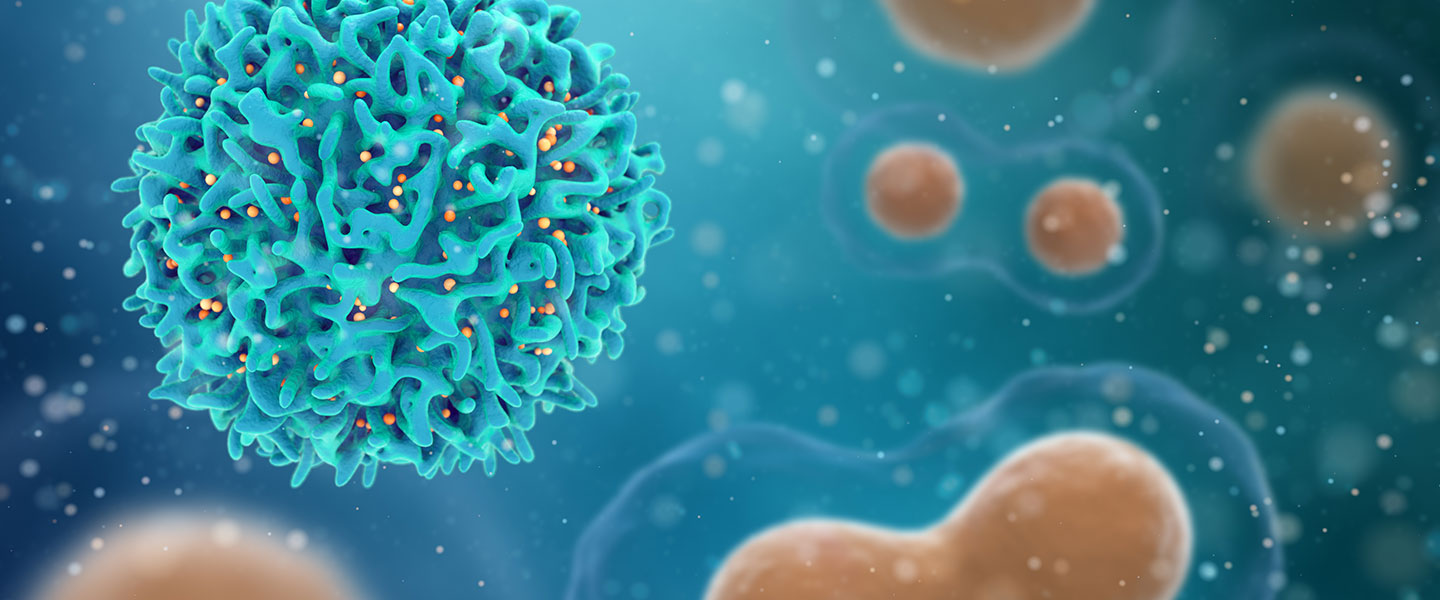Aside from non-melanoma skin cancer, prostate cancer is the most common cancer among men in the United States. For example, according to the Centers for Disease Control (CDC), 224,733 new cases of prostate cancer were reported in 2019 (the latest year for reported incidence rates) among men in the United States, and 31,636 men died from it.
What is our understanding of prostate cancer, and how is it diagnosed and treated? Are there support resources available in the U.S.?
This blog post will shed new light on this typically hidden but potentially deadly disease.
Understanding Prostate Cancer
The prostate is a part of the male reproductive system located just below the bladder and in front of the rectum. It is about the size of a walnut and surrounds the urethra (the tube that empties urine from the bladder). It produces fluid that makes up a part of semen. It’s not considered essential for life, but it does provide an important role by secreting fluid that mixes with semen, keeping sperm healthy for conception and pregnancy.
Signs and symptoms include difficulty starting urination, weak or interrupted flow of urine, urinating often (especially at night), trouble emptying the bladder, pain or burning during urination, blood in the urine, or pain in the back, hips or pelvis that doesn’t go away.
It’s not clear what causes prostate cancer. However, like other cancers in the body, prostate cancer begins when cells in the prostate develop changes in their DNA that lead to abnormal growth in the cells. The accumulating abnormal cells form a tumor that can grow to invade nearby tissue.
Risk Factors Associated with Prostate Cancer
Certain risk factors increase the odds of prostate cancer. For example, the odds increase with age and is more common in men who are 50 or older. Family history plays a role, as does genetics. Black men have a greater risk of prostate cancer than men of other races, and it is more likely to be aggressive or advanced. Obesity has also been linked to prostate cancer. Some studies have found that obese men have a lower risk of getting a low-grade (slower-growing) form of the disease but a higher risk of getting more aggressive (faster-growing) prostate cancer, but the reasons are unclear.
Classifications and Risk Categories for Prostate Cancer
Classifications
There are two classifications for prostate cancer – Castrate Resistant (CRPC) and Castrate Sensitive (CSPR). Castrate Resistant is a cancer that keeps growing even when the amount of testosterone in the body is reduced to very low levels. Castrate Sensitive is a cancer that needs androgens (including testosterone) to grow and therefore stops growing when androgens are not present.
Risk Categories
The National Comprehensive Cancer Network (NCCN) has developed a classification system that categorizes prostate cancer patients into risk groups based on several factors, including Prostate-Specific Antigen (PSA) levels, biopsy results, and clinical stages. The three main risk groups are low-risk, intermediate-risk, and high-risk prostate cancer.
- Low-risk prostate cancer: Patients with low-risk prostate cancer have a PSA level of less than ten ng/mL, a biopsy Gleason score of 6 or less, and a clinical stage of T1-T2a. These patients typically have a low risk of cancer progression and can often be managed with active surveillance or watchful waiting, which involves regular monitoring of PSA levels and periodic biopsies. Treatment options for low-risk prostate cancer may include radical prostatectomy, radiation therapy, or brachytherapy.
- Intermediate-risk prostate cancer: Patients with intermediate-risk prostate cancer have a PSA level between 10 and 20 ng/mL, a biopsy Gleason score of 7, or a clinical stage of T2b-T2c. These patients have a higher risk of cancer progression than those with low-risk prostate cancer and may benefit from more aggressive treatment options, such as radiation therapy with or without hormone therapy or radical prostatectomy with or without adjuvant therapy.
- High-risk prostate cancer: Patients with high-risk prostate cancer have a PSA level of more than 20 ng/mL, a biopsy Gleason score of 8-10, or a clinical stage of T3a-T4. These patients have a high risk of cancer progression and may require more aggressive treatment options, such as radiation therapy with hormone therapy or combination therapy with chemotherapy and hormone therapy. Surgery may also be an option for some patients with high-risk prostate cancer, but it is usually reserved for those with good overall health and a low risk of complications.
Treatments for Prostate Cancer
Prostate cancer is a complex disease that can require a range of treatments depending on the severity of the cancer and other individual patient factors. The following are the most common treatment options:
- Active Surveillance
- Surgery
- Radiation
- Hormone Therapy
- Chemotherapy
- Immunotherapy
- Combination Therapy
Active Surveillance
Active surveillance involves monitoring cancer without any immediate treatment. It is generally reserved for low-risk prostate cancer patients with a low PSA (Prostate-specific antigen) level and low-grade cancer. Regular check-ups with PSA testing, digital rectal exams, and biopsies may be conducted to monitor the cancer progression. This approach is used to avoid the potential side effects of aggressive treatments. Active surveillance can be accomplished with regular monitoring, delayed treatment, or shared decision-making, where the patient and healthcare provider determine the best course of action based on the individual’s age, overall health, and cancer risk.
PSA Test
The prostate-specific antigen (PSA) test is a blood test that measures the levels of PSA in a man’s blood. PSA is a protein produced by the prostate gland, and high levels of PSA can indicate prostate cancer. However, using PSA testing for prostate cancer screening has been an ongoing debate.
According to the National Cancer Institute, a systematic review and meta-analysis of all randomized controlled trials comparing PSA screening with usual care in men without a diagnosis of prostate cancer concluded that PSA screening for prostate cancer leads to a slight reduction in prostate cancer mortality over ten years but does not affect overall mortality.
This explains why guidelines from the U.S. Preventive Services Task Force and the American College of Physicians recommend against routine prostate cancer screening for men over 70 or those with less than a 10- to 15-year life expectancy.
Surgery
Also known as a radical prostatectomy, surgery involves removing the entire prostate gland and nearby lymph nodes. This option is best suited for localized or early-stage prostate cancer patients. There are two types of surgery: open and robotic. Open surgery is a traditional procedure, while robotic surgery uses robotic arms and cameras to operate with greater precision and less invasive. Risks associated with surgery include bleeding, infection, urinary incontinence, erectile dysfunction, and damage to surrounding organs and tissue.
Radiation Therapy
Radiation therapy uses high-energy beams to destroy cancer cells. It can be used for low-risk, intermediate-risk, or high-risk prostate cancer patients. The two types of radiation therapy include external beam radiation therapy and brachytherapy. External beam radiation therapy is delivered from a machine outside the body, while brachytherapy involves the placement of radioactive seeds inside the prostate gland. Risks associated with radiation therapy include fatigue, skin irritation, urinary problems, bowel problems, erectile dysfunction, and a small risk of developing a second cancer.
Several types of radiation therapy have been used to treat prostate cancer:
- External beam radiation therapy – involves directing high-energy radiation beams at the prostate gland from outside the body. The most common type of external beam radiation therapy used for prostate cancer is intensity-modulated radiation therapy (IMRT), which uses computer-generated images to guide the radiation beams and deliver a precise dose of radiation to the tumor while minimizing damage to surrounding healthy tissue.
- Brachytherapy – is a type of radiation therapy that involves placing small radioactive seeds directly into the prostate gland. The seeds emit radiation that destroys cancer cells while sparing nearby healthy tissue.
- Proton therapy – is an external beam radiation therapy that uses protons instead of X-rays to deliver radiation to the prostate gland. Proton therapy is believed to be more precise and may cause fewer side effects than traditional external beam radiation therapy, although it is not widely available.
- Stereotactic body radiation therapy (SBRT) is an external beam radiation therapy that delivers a high radiation dose in a few sessions, typically five or fewer. SBRT is commonly used in patients with early-stage prostate cancer who are not candidates for surgery.
- High-intensity focused ultrasound (HIFU) – is a non-invasive type of radiation therapy that uses high-frequency sound waves to destroy cancer cells in the prostate gland.
Hormone Therapy
Hormone therapy blocks the male hormones (androgens) that fuel the growth of prostate cancer cells. This systemic treatment can be used alone or with other treatments like radiation therapy or chemotherapy. Hormone therapy is recommended for advanced prostate cancer patients. Risks associated with hormone therapy include hot flashes, fatigue, decreased libido, erectile dysfunction, weight gain, and an increased risk of bone fractures.
The most common hormone therapies used for prostate cancer are:
- Androgen Deprivation Therapy
- Luteinizing hormone-releasing hormone (LHRH)
- First-generation Antiandrogens
Androgen Deprivation Therapy (ADT)
Androgen Deprivation Therapy (ADT) is a standard treatment for prostate cancer, also known as androgen suppression therapy. It works by reducing the levels of male hormones (androgens) in the body, particularly testosterone, which fuels the growth of prostate cancer cells.
ADT is commonly used for prostate cancer patients with metastatic disease, not candidates for surgery or radiation, or those with recurrent or progressive disease after initial treatment. It may also be combined with radiation therapy for intermediate or high-risk localized prostate cancer patients.
There are two types of ADT: medical and surgical. Medical ADT involves administering drugs that prevent the testicles from producing testosterone. The most common drugs used are luteinizing hormone-releasing hormone (LHRH) agonists, which lower testosterone levels by suppressing the pituitary gland’s production of luteinizing hormone. Other medications, such as anti-androgens, may also block the action of androgens in the body.
Surgical ADT (also called orchiectomy) involves removing the testicles, which are the primary source of testosterone production in men.
ADT has been shown to reduce the size and growth rate of prostate tumors effectively and, in some cases, even shrink them. However, it is not a cure for prostate cancer and may have side effects, including hot flashes, decreased sex drive, erectile dysfunction, and loss of bone density. Long-term ADT use has also been associated with an increased risk of diabetes, cardiovascular disease, and cognitive impairment.
Luteinizing hormone-releasing hormone (LHRH)
Luteinizing hormone-releasing hormone (LHRH), also known as gonadotropin-releasing hormone (GnRH), is a hormone that is produced in the hypothalamus and stimulates the release of luteinizing hormone (L.H.) and follicle-stimulating hormone (FSH) from the pituitary gland. L.H. and FSH stimulate the production of testosterone in the testes.
LHRH agonists are a type of medication used to treat prostate cancer by reducing testosterone production in the body. LHRH agonists work by initially stimulating the pituitary gland to release more L.H. and FSH, which leads to an initial increase in testosterone levels. However, with continued use, LHRH agonists desensitize the pituitary gland, leading to decreased L.H. and FSH production and a subsequent decrease in testosterone levels.
LHRH agonists are typically given as injections or implants and can be used alone or in combination with other treatments, such as radiation therapy or chemotherapy. They are typically used to treat advanced or metastatic prostate cancer but may also be used in certain cases of localized prostate cancer.
First-generation Antiandrogens
First-generation antiandrogens are medications used to treat prostate cancer by blocking the action of male hormones, such as testosterone, on prostate cancer cells. These medications work by binding to androgen receptors on cancer cells, preventing testosterone from binding to these receptors and stimulating the growth of cancer cells.
The first-generation antiandrogen medication flutamide was the first antiandrogen approved by the U.S. Food and Drug Administration (FDA) for the treatment of prostate cancer in the 1980s. Other first-generation antiandrogens include bicalutamide and nilutamide.
First-generation antiandrogens are typically used with LHRH agonists or surgical castration to treat advanced or metastatic prostate cancer. They may also be combined with radiation therapy for intermediate or high-risk prostate cancer types.
Second-generation LHRH Agonists
Second-generation LHRH agonists are a class of medications used to treat prostate cancer by reducing testosterone levels in the body. These drugs work by binding to and activating the LHRH receptors in the pituitary gland, which leads to a decrease in the production of luteinizing hormone (L.H.) and follicle-stimulating hormone (FSH). This, in turn, leads to a decrease in testosterone levels.
The second-generation LHRH agonists, such as goserelin, leuprorelin, and triptorelin, have a longer half-life than the first-generation drugs, which means they need to be administered less frequently. They are typically given as injections or implants and are often combined with other treatments, such as radiation therapy or chemotherapy.
The side effects are similar to those of first-generation LHRH agonists, such as hot flashes, decreased sex drive, erectile dysfunction, and decreased bone density.
Chemotherapy
Chemotherapy is typically used for advanced prostate cancer patients who have not responded to other treatments.
There are several different types of chemotherapy drugs that may be used in the treatment of prostate cancer, including:
- Docetaxel – a chemotherapy drug that disrupts cancer cells’ ability to divide and grow. It is commonly used to treat advanced or metastatic prostate cancer.
- Cabazitaxel – a chemotherapy drug used to treat advanced or metastatic prostate cancer. It works by inhibiting cell division and inducing cancer cell death.
- Mitoxantrone – a chemotherapy drug that interferes with the DNA in cancer cells, ultimately leading to cell death. It is typically used with other chemotherapy drugs to treat advanced prostate cancer.
- Carboplatin – a chemotherapy drug that interferes with DNA replication, leading to cell death. It is sometimes used with other chemotherapy drugs to treat advanced or metastatic prostate cancer.
- Cisplatin is a chemotherapy drug that binds to DNA, preventing cancer cells from dividing and growing. It is not commonly used to treat prostate cancer but may be considered in some instances.
Chemotherapy can cause significant side effects, including hair loss, nausea, and fatigue.
Immunotherapy
Immunotherapy is a cancer treatment that uses the immune system’s power to target and destroy cancer cells. In recent years, several immunotherapy drugs have been developed and approved for the treatment of prostate cancer.
One type of immunotherapy used to treat prostate cancer is immune checkpoint inhibitors. These drugs block specific proteins in cancer cells that can prevent the immune system from recognizing and attacking them. By blocking these proteins, immune checkpoint inhibitors can help the immune system target and destroy cancer cells.
Two immune checkpoint inhibitors that have been approved for the treatment of prostate cancer are pembrolizumab and nivolumab. These drugs are typically used in men with advanced or metastatic prostate cancer that has not responded to other treatments.
Another type of immunotherapy that has been used in the treatment of prostate cancer is called Sipuleucel-T. This treatment involves taking immune cells from a patient’s blood, modifying them to target prostate cancer cells, and then infusing them back into the patient’s body. Sipuleucel-T has been approved to treat advanced prostate cancer that has spread to other parts of the body. Risks associated with immunotherapy may include fatigue, fever, rash, and an increased risk of infection.
Combination Therapy
Combination therapy involves the use of two or more treatment options. For example, radiation therapy can be combined with hormone therapy, or surgery can be combined with radiation therapy. Combination therapy is recommended for high-risk or advanced prostate cancer patients.
Support for Patients with Prostate Cancer
Several support resources exist in the U.S. for men with prostate cancer and their families or caregivers. Those include:
- Cancer Lifeline: Cancer Lifeline hosts an online support group for people with prostate. Topics include coping with cancer and new prostate cancer treatments.
- Malecare: This site manages several online discussion communities for prostate cancer. They include gay men’s support group, an early-stage group, an advanced state group, and a community for erectile dysfunction group.
- My Prostate Cancer Coach: This app provides resources, treatment guides, and a journal to record notes about visits with providers.
- Prostate Cancer Foundation: This organization hosts several private Facebook groups for people with prostate cancer, along with support groups for veterans, the newly diagnosed, Black men, transgender women, and caregivers.
- Prostate Cancer Research Institute (PCRI): PRCI’s website lists support groups that meet virtually or in person nationwide.
- ZERO: ZERO offers several outlets for people with prostate cancer to get support. They have a ZEROMENtor program that connects newly diagnosed cancer survivors. ZERO also has a private cancer support network on Facebook, regional chapters across the country, and resources for veterans.
###
PLEASE NOTE: This post is to be used for informational purposes only and should not be viewed as medical advice. If you have specific questions about prostate cancer or wish to discuss the best treatment option for you – please consult your physician.
Special thanks to NantHealth team member Clarice Holmes, RN, for assisting with this post.
Sources
- National Comprehensive Cancer Network (NCCN): https://www.nccn.org/
- American Cancer Society: https://www.cancer.org/cancer/types/prostate-cancer.html
- Urology Care Foundation: https://www.urologyhealth.org/urologic-conditions/prostate-cancer
- National Cancer Institute: https://www.cancer.gov/types/prostate
- Prostate Cancer Foundation: https://www.pcf.org/
- Centers for Disease Control (CDC): https://www.cdc.gov/cancer/prostate/index.htm
- Cleveland Clinic: https://my.clevelandclinic.org/health/diseases/8634-prostate-cancer
- Johns Hopkins Medicine: https://www.hopkinsmedicine.org/health/conditions-and-diseases/prostate-cancer/proton-therapy-for-prostate-cancer







